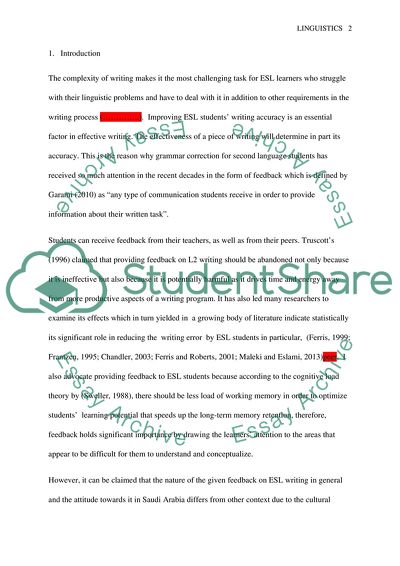Cite this document
(Feedback strategies, Teacher Feedback, and General Peer Feedback in Saudi Academic Environment Essay Example | Topics and Well Written Essays - 4500 words, n.d.)
Feedback strategies, Teacher Feedback, and General Peer Feedback in Saudi Academic Environment Essay Example | Topics and Well Written Essays - 4500 words. https://studentshare.org/humanitarian/1877430-feedback-types-and-strategies
Feedback strategies, Teacher Feedback, and General Peer Feedback in Saudi Academic Environment Essay Example | Topics and Well Written Essays - 4500 words. https://studentshare.org/humanitarian/1877430-feedback-types-and-strategies
(Feedback Strategies, Teacher Feedback, and General Peer Feedback in Saudi Academic Environment Essay Example | Topics and Well Written Essays - 4500 Words)
Feedback Strategies, Teacher Feedback, and General Peer Feedback in Saudi Academic Environment Essay Example | Topics and Well Written Essays - 4500 Words. https://studentshare.org/humanitarian/1877430-feedback-types-and-strategies.
Feedback Strategies, Teacher Feedback, and General Peer Feedback in Saudi Academic Environment Essay Example | Topics and Well Written Essays - 4500 Words. https://studentshare.org/humanitarian/1877430-feedback-types-and-strategies.
“Feedback Strategies, Teacher Feedback, and General Peer Feedback in Saudi Academic Environment Essay Example | Topics and Well Written Essays - 4500 Words”. https://studentshare.org/humanitarian/1877430-feedback-types-and-strategies.


